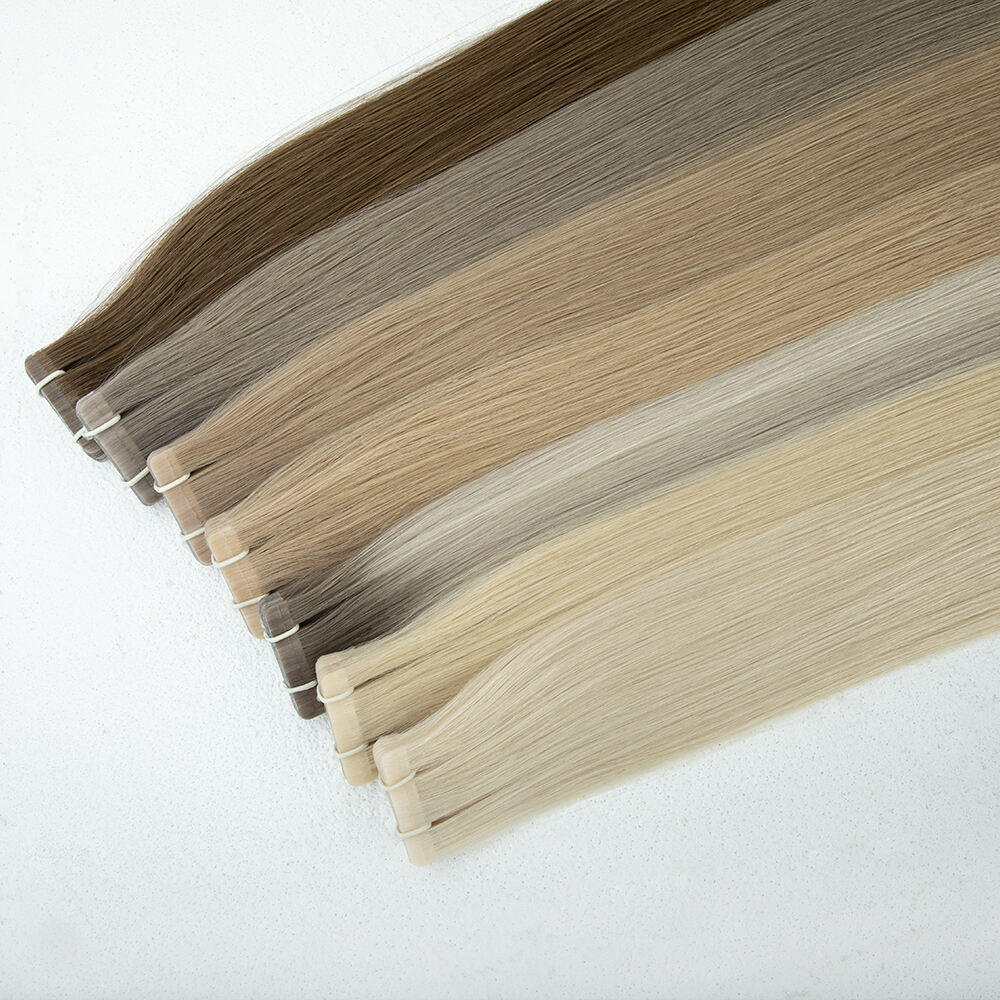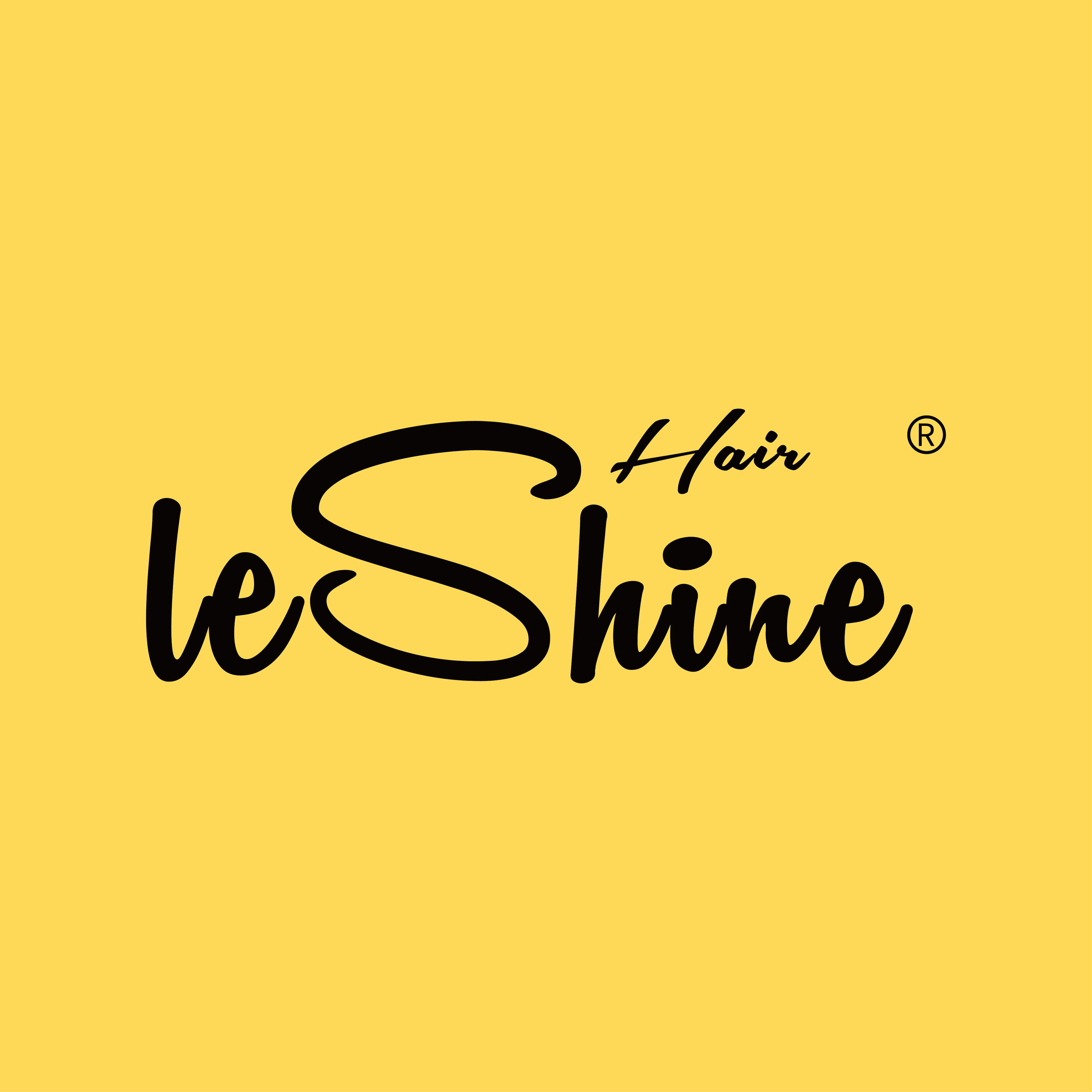
Understanding Hair Weft Extension Types and Selection
Definition and Core Types of Hair Weft Extensions
Hair weft extensions are pre-bonded strands sewn onto a horizontal base, used to add length and volume. The four primary types cater to different needs:
- Machine wefts: Dense, durable construction ideal for thick hair needing volume
- Hand-tied wefts: Lightweight, flexible bases designed for fine hair
- Skin wefts: Transparent polyurethane strips mimicking scalp appearance
- Genius wefts: Hybrid designs combining durability with seamless blending
Choosing Hair Wefts Based on Your Hair Texture and Color
Choose weft type by examining hair thickness—hand-tied or genius wefts won’t uproot fine hairs, while machine wefts can handle thicker strands. When matching colours just bring the weft in the sun light with your own hair and choose the right one. A 2023 hair extension survey revealed that 78% of users obtain seamless blends by choosing wefts to be 1-2 levels lighter than their roots to add dimension.
Essential Hair Weft Installation Tools and Preparation
Must-Have Tools for No-Sew Hair Weft Application
When applying no-sew hair weft extensions for salon-quality results, all you need is the right tool. Sections are nice and clean with a rat-tail comb, and silicone-lined sectioning clips keep them from sliding where you don’t want them. The micro link pliers attach beads to hair without harming hair cuticles, and loop tools make it easy to pull wefts through anchor points. Be sure to have sharp haircutting scissors handy for blending and heat protectant spray for styling post-install.
Pre-Installation Hair Cleansing and Sectioning Protocol
Begin with freshly washed hair with sulfate-free shampoo to get rid of oils which can weaken the adhesion. Blow your roots completely dry—damp strands slash grip strength by as much as 40%. Section hair into 1" panels using your rat-tail comb and your sectioning clip to separate. This structured development is beneficial, as you can work on one section, without interfering with neighboring wefts.
Creating Optimal Tension for Hair Weft Placement
Keep pressure even by pulling natural hair up to the weft with one hand, all while supporting weft with your other hand. The perfect hold is to have the same tension as a loose braid: tight enough to remove slack, but light enough to prevent follicle stress. Check the tightness of the test by gently inserting a fingernail between your scalp and the weft base; it should slide through without catching.
No-Sew Beaded Hair Weft Attachment Step-by-Step
Bead Positioning and Anchor Creation Technique
Section hair horizontally to get started, using a tail comb and leaving a 1 – 2 cm space from the scalp. Slide silicon-coated micro beads onto 0.6 cm hair sections—thicker than sewing threads, thinner than traditional braids. Firmly crimp crimp beads closed 0.3 cm from the roots using crimping pliers, allowing for secure anchor points that evenly distribute weight. Sew beads with 1.5 cm distance each other so tension is not stratifying.
Securing Hair Wefts with Micro Links and Pliers
Place weft tracks in between bead rows in the down position as close to the scalp horizontally as possible, 3.Attach weft Holding your index finger, thread a c-needle through a micro link. Step 8 V-Jaw Pliers can be used to snap the links shut over the bead and the weft at the same time using 15-20 lbs of pressure for the best grip. For finer hair, switch between vertical and diagonal sectioning to achieve optimal surface coverage while preserving natural movement.
Layering Strategies for Natural-Looking Hair Wefts
Install wefts in staggered 3-4-3 patterns across three horizontal sections:
- Base layer: 18 cm wefts at occipital bone level
- Mid layer: 15 cm wefts 3 cm above base
- Crown layer: 12 cm wefts following parietal ridge
This tiered approach mimics natural hair density gradients, with 180g wefts providing 40% more volume than traditional clip-ins while maintaining scalp comfort.
Blending Hair Wefts with Natural Hair Seamlessly
Point-cut weft ends at 45° angles to break up blunt lines, then blend using a razor comb on the top 5 cm of both natural and extension hair. For color discrepancies, apply semi-permanent glaze matching your natural shade’s underlying pigment—warm tones (gold/red) blend 27% more effectively than cool tones.
Emergency Fixes for Slipped Hair Wefts
Carry mini silicone elastics for on-the-go repairs:
- Twist slipped bead 180°
- Wrap elastic around base twice
- Secure with flat knot under hairline
For plier-free adjustments, apply keratin-infused sealing spray to tightened beads—provides 8-12 hour hold until professional reinforcement.
Alternative Hair Weft Attachment Methods Compared
Clip-in vs. Tape-in Hair Weft Application
Clip-in hair extensions are the fastest and safest way to add length, volume and color without causing damage to your own hair, the clips simply snap in and out of place very easily Clips containing rubber having 4pcslosure, you can adjust it to your head size because they are human hair extensions. Great for those who want to wear them once in a while or for a night out, as they do no harm when they are taken off at the end of the day, they do not quite have the same subtlety that other semi-permanent options do. Tape in hair extensions and a natural way add length to your hair.Bonding with medical grade adhesive.One package includes 100 strips and it lasts for 6–8 weeks with professional application. Less obvious than clip-ins, tape-ins must be carefully placed to prevent tension-induced breakage.
When to Consider Professional Sew-in Hair Wefts
Weaving methods are the most comfortable, as they add no weight to hair, and the longest lasting (8–12 weeks) because they are braided into natural hair in cornrows and wefts are then sewn onto the braids. This method is appropriate for all hair types, but especially wise for those with thicker or multi-textured hair who desire maximum durability for athletic or daily wear. Sew-ins must be performed by a trained stylists to avoid scalp irritation (they are typically tightened every 4–6 weeks).
Hair Weft Extension Maintenance and Longevity
Daily Detangling and Styling Best Practices
Comb through hair wefts with a wide-tooth comb or soft-bristle brush starting at the ends and working your way up to reduce stress on bonds, every morning. You should not pull or use aggressive staff for the area around the attachment spot. For style, do not exceed 350°F and use a thermal protecting spray. At night, clip extensions in a loose braid or low ponytail to avoid tangling. Silk pillowcases cut friction by 40 percent versus cotton.
Washing Frequency and Sulfate-Free Care Routine
Shampoo hair wefts every 10-14 days with sulfate free products to maintain color and bond strength. Too much cleansing will over strip the natural oils resulting in increased wear on the extensions and your natural hair. When you shampoo, massage down toward the wefts, never scrub up. Dry roots with a blow-dryer on low heat and don’t go to bed with weft on without being completely dry to avoid bacteria development.
Professional Adjustment Cycles for Hair Wefts
Make salon appointments every 6-8 weeks for the bonds to be repositioned and checked for tension. Trimming protects against strained ends, and neglecting this can lead to unsalvageable damage to your extensions. Harsh tension creates uneven weight distribution, which breaks weaves 78% of the time. With professional maintenance and home care, the life of a weft can last up to 4-6 months.
Troubleshooting Common Hair Weft Installation Issues
Resolving Tension Discomfort with Hair Wefts
Discomfort due to tension is usually caused by tight placing of beads or not wide enough section to begin with. To lessen tension, pad with silicone between wefts and scalp. Vary bead size based on hair amount—you’ll need larger beads for thicker strands (6-8mm is perfect for 80% of users). Clients who experience headaches should refrain from wearing high ponytails for the first 48 hours after the extension attachment, to allow the bond to settle.
Preventing Shedding and Weft Slippage
Shedding increases by 40% when wefts are cut without sealing the stitching. Apply clear nail polish or specialized weft sealant to any trimmed edges. For slippage prevention:
- Avoid heavy oils near attachment points
- Use non-slip hair grips during workouts
- Clean roots weekly with dry shampoo
Re-tighten beads every 3-4 weeks using micro-pliers, checking for proper grip without over-crimping.
Salvaging Damaged Hair Wefts — When to Replace
Extend weft lifespan by 2-3 months with these salvage techniques:
- Frayed stitching: Apply fabric glue along weft edge
- Split ends: Trim 0.5cm with razor-sharp shears
- Discoloration: Use semi-permanent color masks
Replace wefts immediately if 30%+ hairs detach from the track or multiple stitching rows fail. Professional reassessment every 12 weeks helps catch structural weaknesses before complete failure occurs.
Frequently Asked Questions (FAQ)
What are the different types of hair weft extensions?
The main types of hair weft extensions include machine wefts, hand-tied wefts, skin wefts, and genius wefts.
How do I choose the right hair weft for my hair type?
Select a weft based on your hair's thickness. Hand-tied or genius wefts are ideal for fine hair, while machine wefts work well for thicker hair.
What tools do I need for no-sew hair weft installation?
Essential tools include a rat-tail comb, silicone-lined sectioning clips, micro link pliers, loop tools, and sharp haircutting scissors.
How often should hair wefts be washed?
Hair wefts should be washed every 10-14 days using sulfate-free products.
How can I prevent hair weft slippage?
Avoid using heavy oils near attachment points, use non-slip hair grips during activities, and re-tighten beads every 3-4 weeks.
Table of Contents
- Understanding Hair Weft Extension Types and Selection
- Essential Hair Weft Installation Tools and Preparation
- No-Sew Beaded Hair Weft Attachment Step-by-Step
- Alternative Hair Weft Attachment Methods Compared
- Hair Weft Extension Maintenance and Longevity
- Troubleshooting Common Hair Weft Installation Issues
- Frequently Asked Questions (FAQ)




